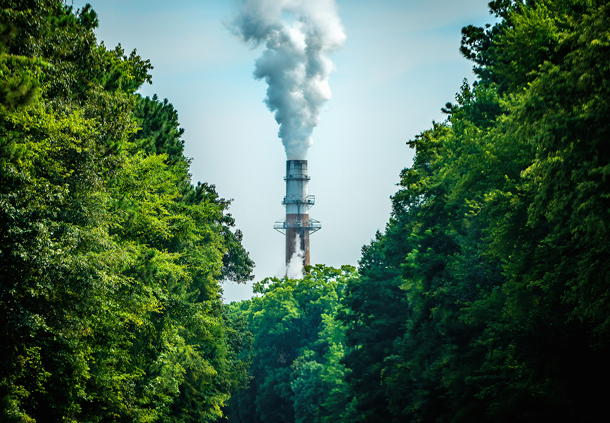CO2 Boosts Photosynthesis
Air Date: Week of October 13, 2017

As carbon emissions rise, plants are responding by performing more photosynthesis and using water more efficiently. (Photo: Bill Dickinson, Flickr CC BY-NC-ND 2.0)
As carbon dioxide levels climb in the atmosphere, plants step up photosynthesis. Living on Earth’s Savannah Christiansen reports in this week’s Note on Emerging Science that the increased carbon in the air also allows vegetation to use water more efficiently.
Transcript
CURWOOD: It’s Living on Earth, and I’m Steve Curwood. Just ahead, how tropical forests have become a net source of carbon emissions. But first this note on emerging science from Savannah Christiansen.
[MUSIC: SCIENCE NOTE THEME]
CHRISTIANSEN: As carbon dioxide builds up in the atmosphere, plants and their energy generation process, photosynthesis, are bound to be impacted. Scientists suspected that more carbon in the air would provide more fuel for photosynthesis so plants could grow more and store more carbon. Now a study led by Scripps CO2 program head, Ralph Keeling, has confirmed this suspicion, and helped explain a mystery about atmospheric carbon.
Atmospheric carbon has two different forms, or isotopes, carbon-12 and carbon-13. Carbon-13 is less common, yet the researchers found that it’s building up in the atmosphere more quickly than expected. Something is taking out extra carbon-12.
To find out why, the team measured ratios of these carbon isotopes from different areas and from archived samples. Plants find carbon-12 easier to use for photosynthesis, so they prefer it. And the sample measurements suggest that they are becoming increasingly picky, using even more carbon-12 and leading to the imbalance.
The researchers note that the current plentiful level of carbon-12 also allows plants to adjust their stomata, the holes in their leaves that control carbon intake, so that they can actually minimize water loss. And while many implications of this are still unclear, it’s possible that, as carbon dioxide levels rise, plants will have a tool to allow for more growth, even when water is scarce.
That’s this week’s note on emerging science. I’m Savannah Christiansen.
[MUSIC: SCIENCE NOTE THEME]
Links
Living on Earth wants to hear from you!
Living on Earth
62 Calef Highway, Suite 212
Lee, NH 03861
Telephone: 617-287-4121
E-mail: comments@loe.org
Newsletter [Click here]
Donate to Living on Earth!
Living on Earth is an independent media program and relies entirely on contributions from listeners and institutions supporting public service. Please donate now to preserve an independent environmental voice.
NewsletterLiving on Earth offers a weekly delivery of the show's rundown to your mailbox. Sign up for our newsletter today!
 Sailors For The Sea: Be the change you want to sea.
Sailors For The Sea: Be the change you want to sea.
 The Grantham Foundation for the Protection of the Environment: Committed to protecting and improving the health of the global environment.
The Grantham Foundation for the Protection of the Environment: Committed to protecting and improving the health of the global environment.
 Contribute to Living on Earth and receive, as our gift to you, an archival print of one of Mark Seth Lender's extraordinary wildlife photographs. Follow the link to see Mark's current collection of photographs.
Contribute to Living on Earth and receive, as our gift to you, an archival print of one of Mark Seth Lender's extraordinary wildlife photographs. Follow the link to see Mark's current collection of photographs.
 Buy a signed copy of Mark Seth Lender's book Smeagull the Seagull & support Living on Earth
Buy a signed copy of Mark Seth Lender's book Smeagull the Seagull & support Living on Earth

